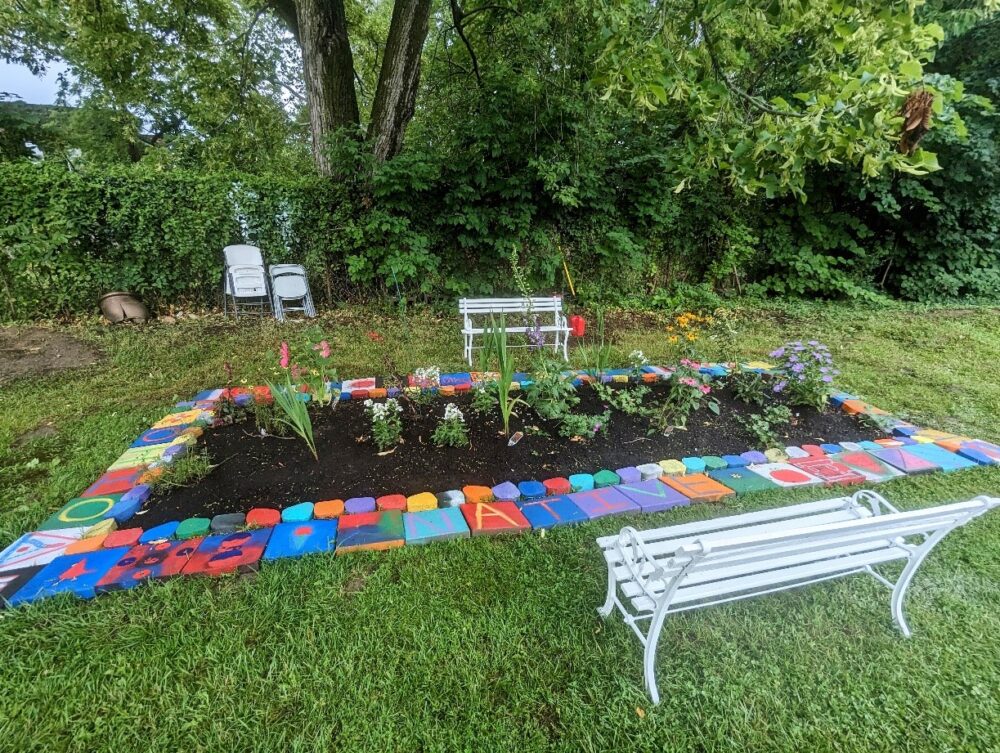We have much more to do and your continued support is needed now more than ever.
National Gardening Association’s Tips on Wildlife Habitat Gardening
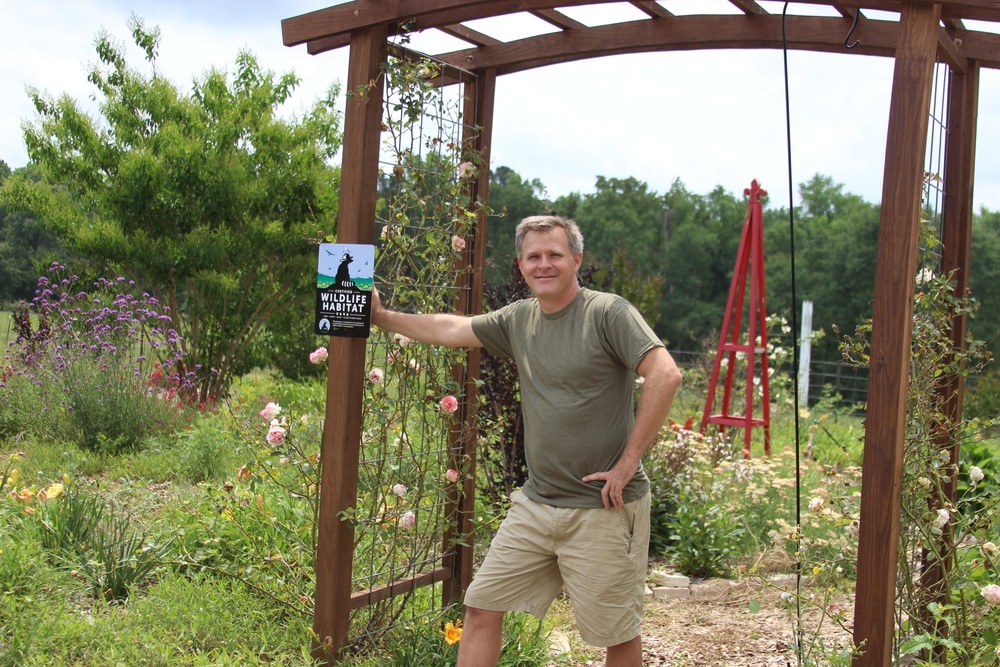
 The National Wildlife Federation has teamed up with the National Gardening Association (NGA) to spread the word about our Garden for Wildlife program and help people create beautiful yards and gardens that support the birds, butterflies and other wildlife.
The National Wildlife Federation has teamed up with the National Gardening Association (NGA) to spread the word about our Garden for Wildlife program and help people create beautiful yards and gardens that support the birds, butterflies and other wildlife.
We interviewed the NGA’s Dave Whitinger for his expert tips on creating a wildlife habitat garden and what resources NGA offers to help.
How did you get into gardening?
Gardening has been a huge part of my life from the very beginning. My grandparents (on both sides) kept beautiful gardens in Wisconsin, and my earliest memories of life have these lovely scenes in the background. I recall sprouting and growing an acorn when I was about 3 years old and I still remember today that addicting feeling of being a part of nature.
My wife and I dedicated ourselves to a life of full-time gardening when we oriented our careers toward educating gardeners in print and online.
When did you first make the realization that our gardens can not only look beautiful but also support birds, butterflies and other wildlife?

I was a Ranger Rick subscriber as a child, and I read every issue that came, so I was quite aware of wildlife, especially birds. My late childhood was in East Tennessee, which is a land blessed with rich plant life and animals. Our home bordered a huge forest and I spent countless days by myself exploring the woods and quietly watching the moving creatures.
The wildlife makes use of all the things it finds and that connection was clear to me. Plants that grow are where most of the needs of wildlife seem to be met. Participating in that through gardening is a way to bring that wilderness to your backyard which is an awesome thing.
How have you gotten your family involved in gardening for wildlife?
For starters, we make a big deal out of any wildlife we see. If we’re in conversation about something but a hummingbird appears, it is socially acceptable to interrupt by shouting “Hummingbird!” and point it out. Any butterflies that appear must be mentioned and their names uttered.
We use permaculture practices in our gardening, which means (among other things) that the elements of our gardens should each provide multiple functions. It’s usually not enough for a flower to be pretty. If we’re going to grow it, then it must have other benefits as well. Perhaps it produces edible fruit, or fixes nitrogen into the ground. But the best benefit a plant can bring is when it is visited by wildlife.
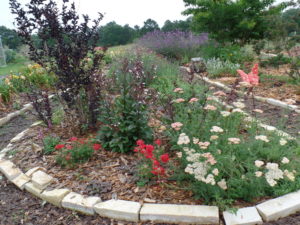
We have an entire garden dedicated to plants that attract pollinators. It’s about 100 feet long and 40 feet wide. There are perhaps 300 different kinds of plants growing in there. We call it “The Butterfly Garden.”
Some children do lemonade stands; our children do plant sales. Each spring our children start propagating plants, starting seeds, and dividing perennials. In April their customers travel from all around the region to buy their plants. The money they make is saved for the future plans and they learn a lot. The most rewarding thing is to see a ten-year-old educating a grown person, telling them about which plants are particularly beneficial to butterflies, and why we should grow milkweed, etc.
What kinds of wildlife do you see in your garden?
We live on a 90-acre ranch in East Texas, which has an ecosystem similar to what you might see in Louisiana. Surrounding our ranch is similar properties, so there is a lot of open space here. Much of our wildlife tends to stay out in the bottomland and wilderness areas of our property. Alligators, coyotes, and deer generally keep to themselves, out of our sight, while the flying creatures are our primary visitors.
Goldfinches are a very special treat when they appear. Cardinals are here in abundance and we greet them by calling them “Friend Cardinal.” Bluebirds, of course, are my favorite bird and we have them everywhere. Mourning doves are plentiful in our pastures. Hummingbirds, as mentioned before, love our property and we see them all through the summer. They often surprise us with the different flowers they visit.
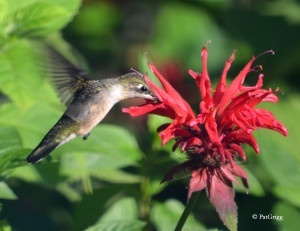
Woodpeckers, scissor-tailed birds, herons, ducks, are all special treats. The pileated woodpecker is particularly striking. The roadrunners are fun to see, hurrying along to wherever they are going. Red-tailed hawks are always fun to see (and hear!). Many years ago we saw what I think was a juvenile bald eagle on our land.
There is a tremendous wealth of butterflies in East Texas. The swallowtails are my favorite and I can usually count on seeing many on any summer day. We grow many species of milkweed and seeing monarchs is always hugely rewarding.
There is also a whole category of pollinators that a lot of people don’t think about and that’s the various beneficial flies and wasps. I love visiting a Ruta graveolens or cilantro plant and see its blooms loaded with 10 different kinds of insects.
What are your top plants for attracting birds? Butterflies?
Milkweed, of course, tops the list because of the monarchs. Everyone grows pretty much the same species and that can get boring. There is a purple milkweed that is rare but interesting. There are some milkweeds that prefer swampy lands that stay wet.
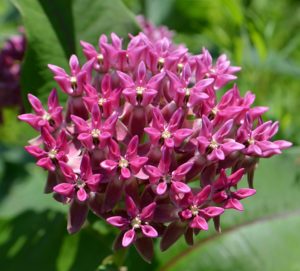
Butterflies love yarrow and I can’t get enough of those. The plant can be weedy but there are many seedless varieties that don’t spread.
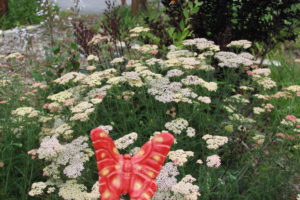
Coneflower is another great one. The flowers are beautiful, butterflies love them, and the goldfinches love the seeds through the winter. We grow ‘Bravado‘.

Salvias might be our best hummingbird plant. The Salvia greggii does particularly well for us, and is shrubby and doesn’t die back.
All the culinary herbs are great, too. Oregano, mint, cilantro/coriander, basil, etc. Bees love herbal flowers and you can use the leaves in the kitchen.

Roses are another pretty good plant to consider. Bees love roses.
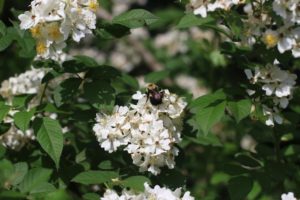
What other advice can you give readers about creating wildlife habitat gardens?
Here are my four tips:
- Don’t be afraid to plant native plants, even if they already grow as wild in your area. Many native plants make outstanding garden specimens in cultivation while at the same time providing wildlife with habitat.
- In addition to planting the plants, include other hard items that the wildlife need. Bird houses, birdbaths, bat houses, and saucers filled with muddy sand and water for butterflies.
- Limit your use of pesticides! Better yet, completely eliminate pesticides entirely from your property.
- Same with synthetic fertilizers. Use compost to enrich the soil and apply generous layers of mulch.
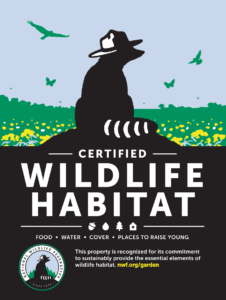 Do you have an NWF Certified Wildlife Habitat yourself?
Do you have an NWF Certified Wildlife Habitat yourself?
I sure do, and I paid for the beautiful metal sign to hang in my garden. The sign draws attention to the fact that we are mindful of wildlife in our gardening, and also promotes what NWF does.
How can garden.org help people who are trying to make wildlife habitat gardens?
Garden.org is an educational resource. Our Learning Library has thousands of articles covering every aspect of gardening, and we always try to teach responsible and sustainable gardening methods. You won’t find articles recommending pesticides; you’ll need to go elsewhere for that. So you can feel pretty confident that you’ll get good advice from our articles.
Our database of plants is among the most complete in existence. For every plant in cultivation, we have all the information you could want about it, including what kinds of animals are attracted by it, how to grow it, what conditions it likes, etc. Our members can post the own photos into our database. We have almost half a million pictures of plants in our database. It’s fun to look and post comments to the various pictures you see on the site.
Our forums are very active and our members are warm and welcoming to new gardeners. Each week the forums get about 7,000 posts. Our “Ask a Question” area is particularly useful for new gardeners. There’s also our annual Seed Swap.
The stuff I mention here really just scratches the surface. We have a lot of useful information and great tools to help gardeners. That’s our mission! We also have some excellent books and magazines that were written over the past few decades, and we are working to bring that material to the web so that all gardeners in the future will have free and convenient access to that wealth of information from the past.
Also, National Gardening Association, along with National Wildlife Federation and several other great organizations, is proud to be a member of the National Pollinator Garden Network. We are working hard to promote gardening that benefits all pollinators.
CERTIFY TODAY



















